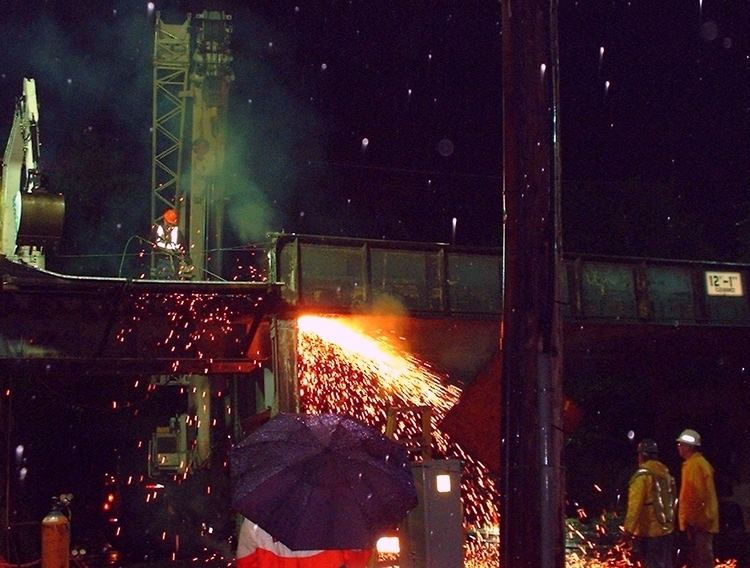 | ||
A thermal lance, thermic lance, oxygen lance, or burning bar is a tool that heats and melts steel in the presence of pressurized oxygen to create the very high temperatures required for cutting. It consists of a long steel tube packed with alloy steel rods, sometimes mixed with aluminium rods to increase the heat output. One end of the tube is placed in a holder and oxygen is fed through the tube.
The far end of the tube is pre-heated and lit by an oxyacetylene torch. An intense stream of burning steel is produced at the workpiece end and can be used to cut rapidly through thick materials including steel and concrete. The tube is consumed, so every few minutes the operator shuts off the oxygen, discards the remaining stub of a lance tube and starts using a new one.
Although often used as a heavy duty demolition tool, the thermic lance can also be used to remove seized axles of heavy machinery without damaging the bearings or axle housing. This technique is most often used on the pins and axles of large equipment such as cranes, ships, bridges and sluice-gates.
The temperature at which a thermal lance operates varies depending on the environment. Kosanke gives the maximum temperature to be 8130 °F (4770 K), while Wang calculates it to be 4950 °F (3010 K).
Popular misconceptions
Popular depictions of thermal lances sometimes exaggerate their capabilities. In the movie The Score Nick Wells (played by Robert De Niro) uses a thermal lance to cut a hole in the top of a safe, to avoid the safe's glass relocker device. A similar device was used in the 2012 film Stolen by Nicolas Cage's character. MythBusters tested the capabilities of the thermal lance and discovered opening a modern safe with a thermal lance takes far longer than depicted in popular accounts. The intense heat also destroyed the items inside the vault (however, in the test, the items were simply inside the safe, while in the clip of The Score, shown in the episode, the contents were themselves in boxes). The MythBusters concluded that using a thermal lance for safe-cracking is plausible, but impractical.
A more accurate depiction of a thermal lance in film is in the 1981 Michael Mann movie Thief, in which a real oxygen lance is used to cut a doorway through a real vault door. The only questionable inaccuracies are the small number of oxygen bottles used, and the absence of breathing gear.
The 2008 film The Bank Job is loosely based on the Baker Street robbery in 1971 in London, which used a thermal lance. In the film, the robbers successfully use a thermal lance to cut a hole from underneath the reinforced concrete floor of the safe deposit box vault. However, in the actual robbery, the criminals tried but failed to achieve this with a thermal lance and ultimately had to use explosives instead.
